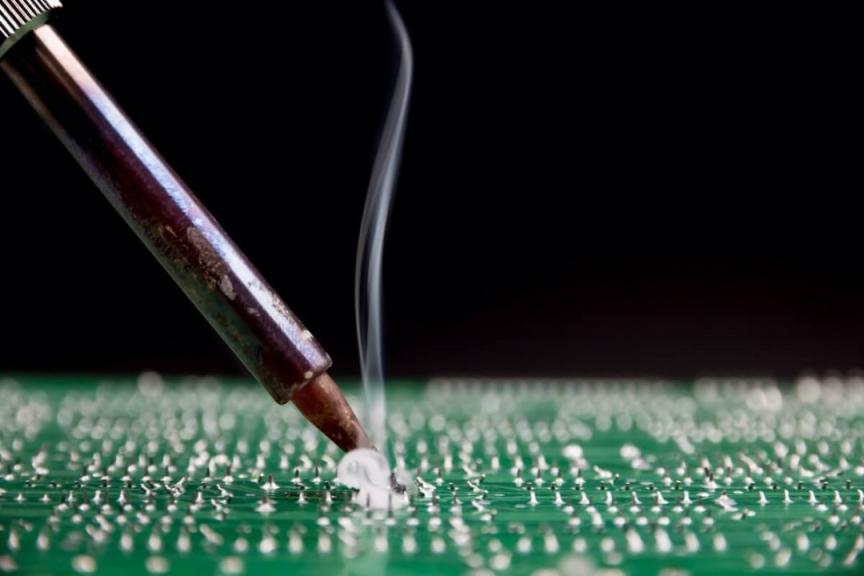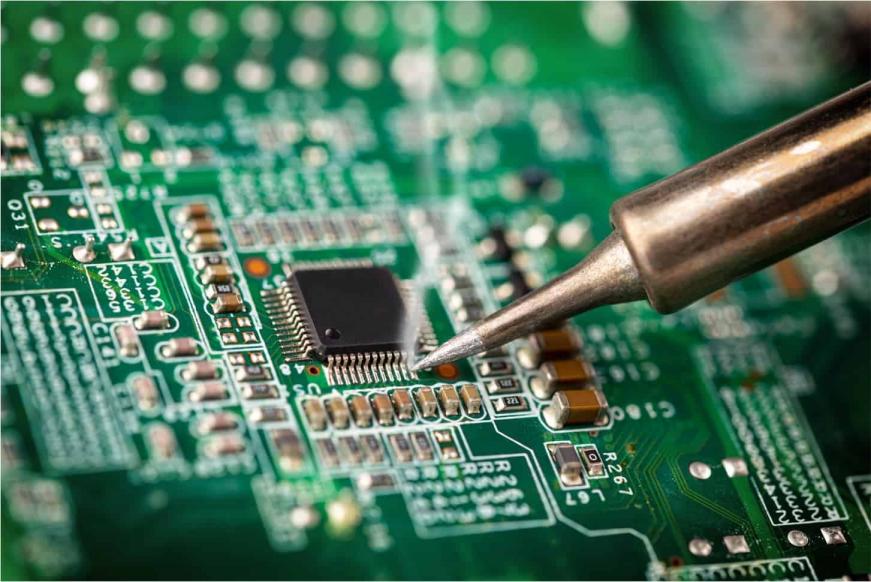Soldering is a fundamental process in printed circuit board (PCB) assembly, essential for securing components to flexible printed circuits (FPC). Best Technology, a leading FPC manufacturer in Asia, specializes in providing comprehensive solutions that encompass everything from bare board manufacturing to PCB Assembly. Adhering strictly to RoHS, ISO9001, and ISO13485 quality standards, and following IPC quality guidelines, Best Technology ensures the highest quality in every assembly service offered. By choosing Best Technology as your FPC assembly supplier, you gain a reliable partner committed to quality assurance and timely delivery.

Understanding Soldering
What is Soldering?
Soldering is the process of joining two or more electronic components together by melting solder around the connection. It is a fundamental skill in both DIY electronics and professional PCB assembly, where it ensures strong, conductive joints.
Types of Solder
The two main types of solder used in PCB assembly are leaded and lead-free solder. Leaded solder is easier to work with due to its lower melting point, but lead-free solder is often required for compliance with health and environmental regulations like RoHS.
Soldering Equipment Overview
- Soldering Irons - These are hand tools used to heat the solder directly. They come in various wattages for different types of jobs.
- Soldering Stations - These units consist of a soldering iron, a stand, and a power station with temperature control capabilities.
- Flux - Used to clean and prepare the metal surfaces, flux prevents oxidation during the soldering process.
- Solder Wick - A braided copper wire used to remove excess solder from joints.
- Solder Sucker - A mechanical device used to quickly remove molten solder, useful in desoldering components.
Preparing for Soldering
PCB Inspection
Before beginning the soldering process, inspect the PCB for any physical defects or contamination that could affect the integrity of the circuit connections.
Component Selection and Preparation
Ensure that all components match the PCB layout specifications and are properly oriented. Preparing components may involve trimming leads or applying thermal paste for heat-sensitive components.
Workspace Setup
Organize all necessary tools and materials within easy reach in a well-lit, ventilated, and static-free environment.
Safety Precautions
Wear protective eyewear and ensure that you work in a well-ventilated area. Handle soldering equipment with care, as it operates at high temperatures.
Basic Soldering Techniques
Through-Hole Soldering
- Component Placement - Insert the component leads through the board's holes.
- Tinning the Iron - Apply a small amount of solder to the iron's tip to improve heat transfer.
- Soldering Components - Heat both the lead and the pad with the iron, then apply solder until it flows freely around the connection.
Surface Mount Soldering
- Stencil Application - Place a stencil over the PCB to apply solder paste accurately.
- Solder Paste Application - Spread solder paste over the stencil to deposit it on the designated pads.
- Component Placement - Position SMD components on the pasted pads using tweezers or a pick-and-place machine.
- Reflow Process - Place the assembled board in a reflow oven where the solder paste will melt and solidify, forming strong solder joints.

Advanced Soldering Techniques
Advanced soldering techniques ensure high reliability and functionality in modern PCB assemblies, particularly for surface mount devices (SMDs). These components are typically soldered onto the PCB using a reflow process, which involves several temperature-controlled zones in a large oven.
Reflow Soldering Process
- Soak Zone (1-3 Zone): The temperature gradually increases to between 125℃ and 165℃. This gradual heating helps avoid thermal shock to sensitive components.
- Preheat Zone (4-7 Zone): The temperature stabilizes between 170℃ and 190℃ for 60-90 seconds, preparing the board for the critical reflow phase.
- Reflow Zone (8-9 Zone): Temperature ramps up to 245℃-250℃, melting the solder paste and allowing it to fuse the component leads to the PCB pads. The molten solder's surface tension maintains component placement.
- Cooling Zone (10 Zone): Finally, the temperature is reduced to solidify the solder quickly, ensuring strong, defect-free joints. The board exits the oven at around 230℃.
This process typically lasts 7-8 minutes, and for double-sided PCBs, it is often repeated to attach components on the reverse side.
Soldering Fine-Pitch Components
Fine-pitch components require precise placement and controlled soldering to avoid bridging or incomplete connections. Techniques include using minimal solder paste and a fine-tipped soldering iron.
Double-Sided Soldering
In double-sided assemblies, components on the second side are held in place with adhesive during the reflow process to prevent displacement.
Soldering Heat-Sensitive Components
For heat-sensitive components, lower temperatures and shorter exposure times are critical to prevent damage. Employing additional cooling measures or heat shields can protect these delicate parts.
These advanced techniques are essential for ensuring that PCB assemblies are robust, functional, and ready for rigorous use.
Tips for Efficient Soldering
Efficient soldering is crucial for creating durable and reliable electronic assemblies. Here are some practical tips to enhance your soldering technique:
Proper Heat Control
Managing the temperature of your soldering iron is vital. Too much heat can damage components or the PCB, while too little may lead to weak solder joints. Adjust the iron's temperature based on the components and solder type you are working with.
Flux Application
Flux is used to clean the surfaces before soldering, helping the solder flow smoothly and bond effectively. Apply it sparingly to avoid excessive residue, which can lead to corrosion or interfere with electrical connections.
Component Orientation
Correctly orienting components before soldering is essential to avoid misalignments that could affect the device's functionality. Double-check the orientation against the circuit diagram before applying solder.
Practice and Patience
Soldering is a skill that improves with practice. Take your time to learn the nuances of different soldering techniques and be patient with each step to ensure the best results.
Utilizing Third-Hand Tools
Third-hand tools or helping hands are invaluable for stabilizing the workpiece, allowing you to focus on applying the right amount of solder precisely. These tools are especially helpful when working with small or intricate components.
CONCLUSION
Mastering the art of soldering is crucial for anyone involved in PCB assembly, where precision and reliability are paramount. By understanding the various soldering processes, from basic to advanced techniques, and implementing effective practices such as proper heat control, careful flux application, and correct component orientation, you can ensure high-quality results. Additionally, tools like third-hand devices can greatly enhance your efficiency and accuracy. With dedication and practice, these skills will not only improve your soldering outcomes but also extend the life and functionality of the PCBs you assemble, embodying the true essence of flexible fusion in electronics manufacturing.










 2024-05-15
2024-05-15
 BEST
BEST

.png)
.png)
.png)
.png)

.png)

